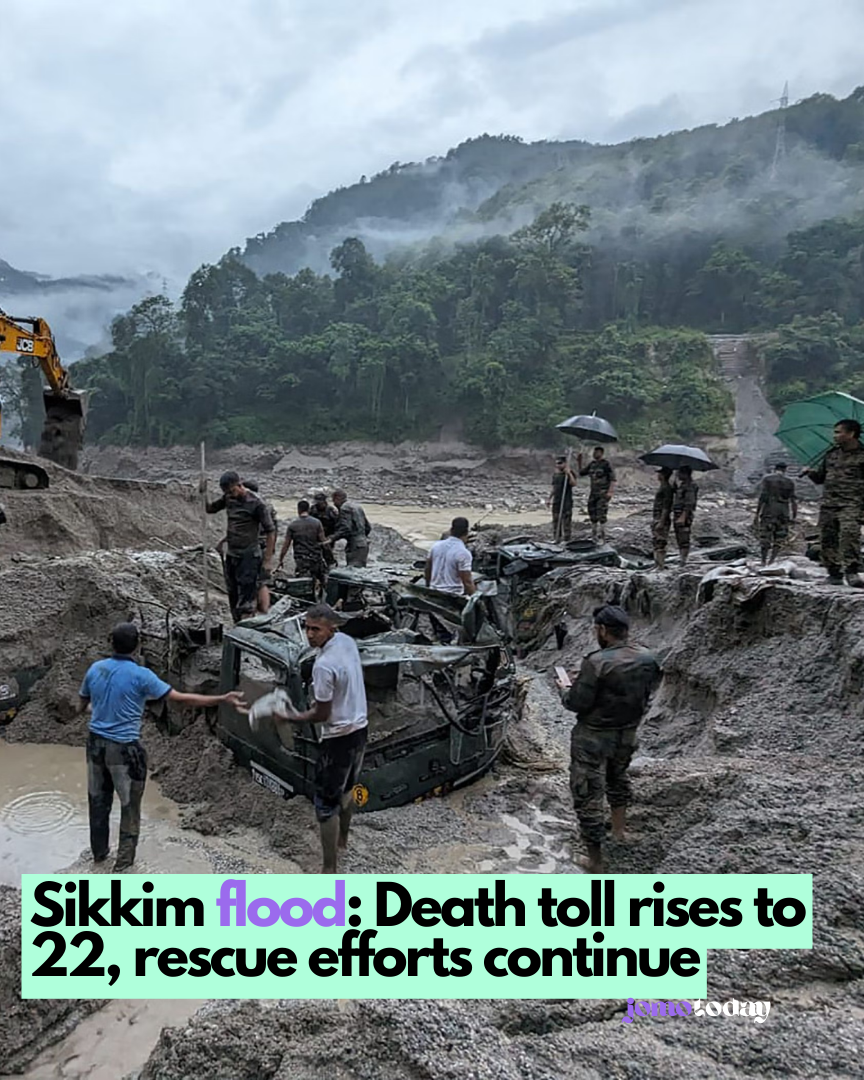Rescue efforts are now in their third day following flash floods in the northeastern state of Sikkim, India, where over 100 people are currently missing. Officials reported at least 22 casualties, including seven soldiers, as of Friday.

These devastating floods were triggered by a cloudburst over a mountain lake earlier in the week. The situation worsened when water from a nearby dam was released into the Teesta River. This release caused severe damage to the power infrastructure at the Chungthang dam before it flowed downstream, inundating towns and villages.
Extensive search and rescue teams have been mobilized throughout Sikkim and the northern regions of neighboring West Bengal, which is downstream from the affected area. Areas near the river remain on high alert.
Among the missing are 23 army personnel, with seven bodies already recovered from different downstream locations, and one soldier rescued earlier in the week. A total of 103 people, including 15 soldiers, are still unaccounted for.
The floods have impacted more than 22,000 people, with many stranded in Lachen and Lachung in northern Sikkim. Mobile phone coverage in the area has been disrupted.
Sikkim’s Chief Minister, Prem Singh Tamang, noted that “road connectivity between districts has been cut off, and bridges have been washed away.” The army is providing food, medical aid, and communication facilities to civilians and stranded tourists, with evacuees being moved to relief camps.
Due to the inclement weather, all schools and colleges in the state will remain closed until October 15.
The floods were initially triggered when Lhonak lake breached its embankment after heavy rainfall on Tuesday night, leading to a rapid rise in the Teesta river’s water levels in the Lachen Valley. The situation escalated further when water from a nearby dam was released into the river.
Satellite images from India’s space agency, Isro, revealed significant changes in the lake’s volume. It covered an area of 167.4 hectares on September 28 but had shrunk to just 60.3 hectares by October 4, causing extensive damage to infrastructure, including roads and bridges.
The flooding also impacted northern parts of neighboring West Bengal, with water from the Teesta affecting districts such as Darjeeling, Kalimpong, Cooch Behar, and Jalpaiguri. Tragically, two individuals lost their lives, and six others were injured when a mortar shell found in the overflowing river exploded in Jalpaiguri. Sikkim, situated in the Himalayas, is prone to floods and natural disasters, as evidenced by severe flooding last year that displaced tens of thousands and resulted in at least 24 fatalities.
Read more: Sikkim cloud burst: At least 23 Indian troops missing after flash floods






1 Comment